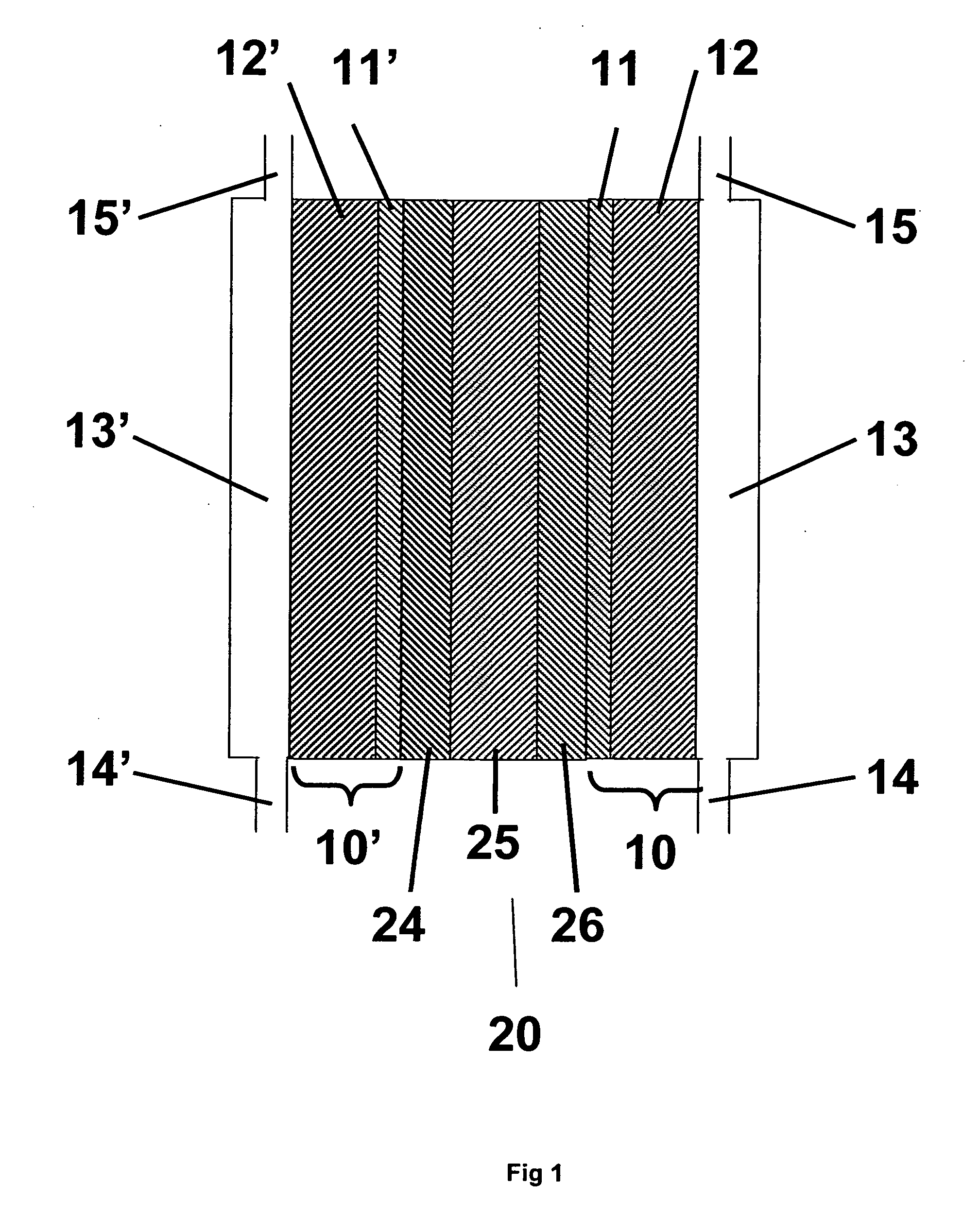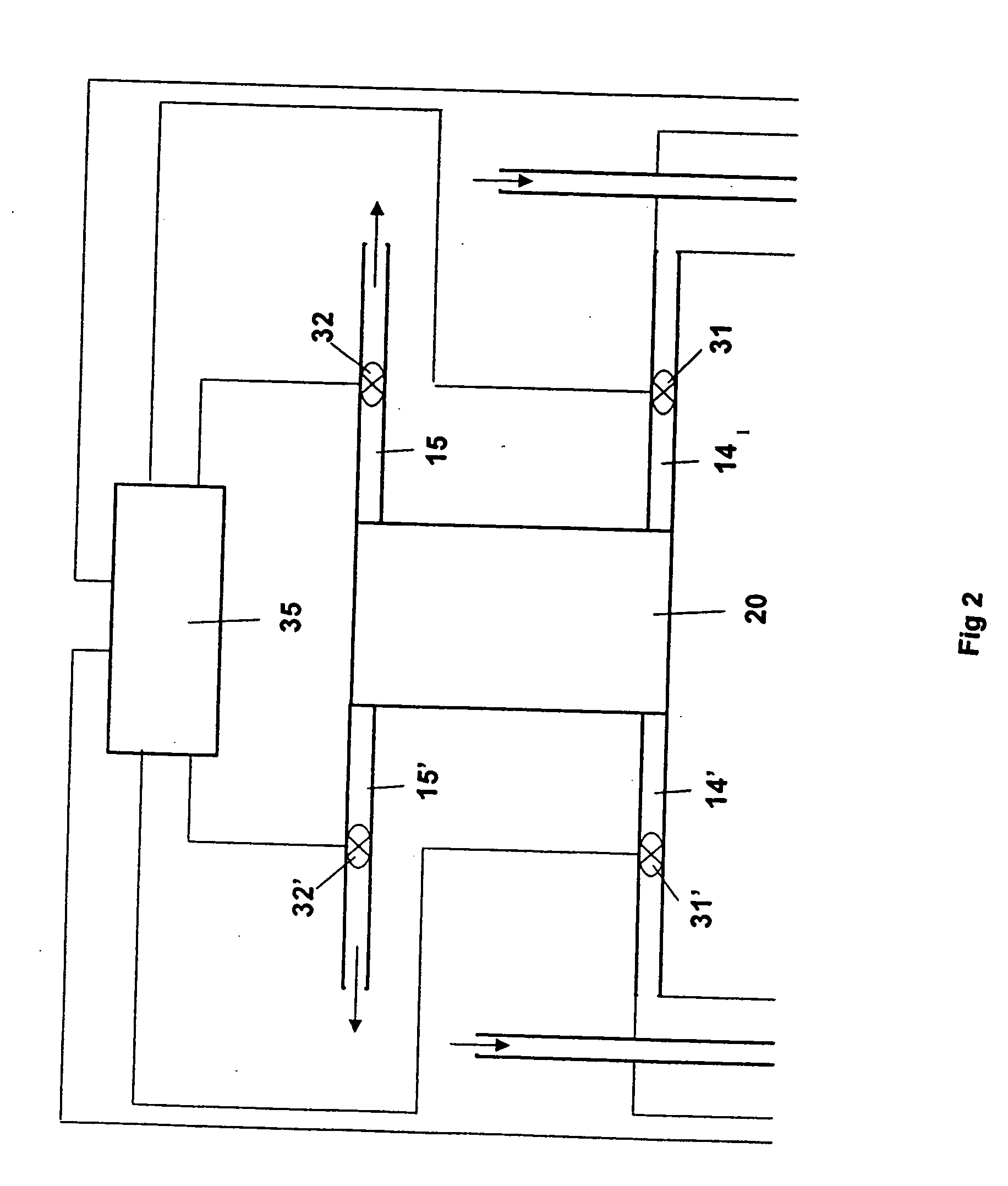Method and apparatus for operating a fuel cell
- Summary
- Abstract
- Description
- Claims
- Application Information
AI Technical Summary
Benefits of technology
Problems solved by technology
Method used
Image
Examples
examples
[0033] Description of Membrane Electrode Assemblies (MEAs) Three types of MEAs labeled Type A, Type B and Type C, were used in the testing. Type A MEAs were PRIMEA® Series 5510 Membrane Electrode Assemblies with a loading of 0.4 mg / cm2 Pt on both the anode and cathode sides, available from W. L. Gore & Associates. These MEAs comprise a GORE-SELECTcomposite membrane of an ePTFE-reinforced perfluorosulfonic acid ionomer. Type B MEAs were identical to Type A except there was an additional treatment to dope the membrane prior to assembly into an MEA with Fe at a level of about 550 ppm. Iron was chosen to be representative of catalysts capable of enhancing the formation of radicals from hydrogen peroxide that can accelerate membrane degradation. Specifically, iron was added to the membranes used in the preparation of Type A MEAs by preparing a 5 PPM iron solution by fully dissolving 0.034 g ferrous sulfate heptahydrate crystals in 1350 g deionized water. A weighed membrane of about 1.3 g...
examples 1-10
[0074] Cells were assembled and tested using the conditions shown in Table 1, where the average outlet relative humidity was sub-saturated. Temperatures were varied as shown between 80 and 130 degrees C. and the anode and cathode inlet RH together with the pressure was varied to assure that the outlet conditions were sub-saturated. In some cases, the stoichiometry of the anode gas, hydrogen, was adjusted as shown in Table 1 to maintain stable cell performance. Tests were performed using the three different types of MEAs and either bolt-loaded or spring-loaded cells as shown in Table 1. Results for these tests are shown in Table 2. At a given temperature, lifetimes are greater, average decay rate at two different currents are lower, and fluoride release rates are lower at the inventive conditions when compared to the Comparative Examples (Table 2, Examples 2-5 versus C1-C2). Extended lifetimes, low decay rates and reduced fluoride or proton release rates have been surprisingly observ...
PUM
 Login to View More
Login to View More Abstract
Description
Claims
Application Information
 Login to View More
Login to View More - R&D
- Intellectual Property
- Life Sciences
- Materials
- Tech Scout
- Unparalleled Data Quality
- Higher Quality Content
- 60% Fewer Hallucinations
Browse by: Latest US Patents, China's latest patents, Technical Efficacy Thesaurus, Application Domain, Technology Topic, Popular Technical Reports.
© 2025 PatSnap. All rights reserved.Legal|Privacy policy|Modern Slavery Act Transparency Statement|Sitemap|About US| Contact US: help@patsnap.com



